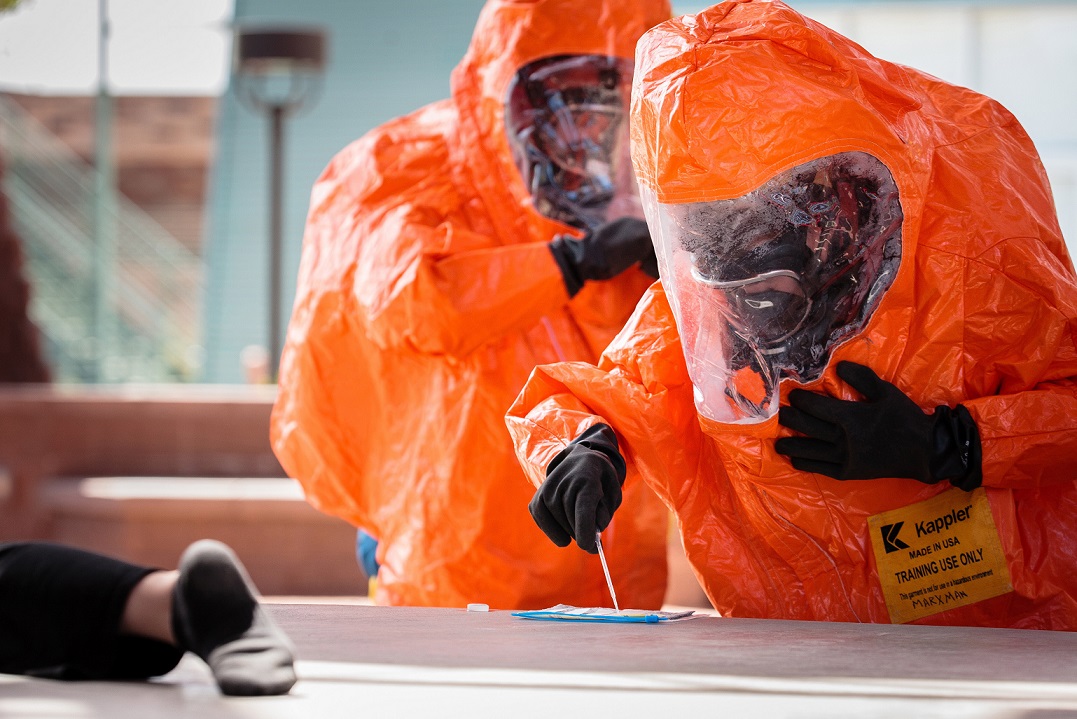
This post is also available in:
 עברית (Hebrew)
עברית (Hebrew)
A new method for containing and deactivating neurotoxic chemicals like VX and sarin has been developed with the funding of the UK Ministry of Defense. These internationally-banned liquids are aerosolized purposely to inflict damage on large geographical areas and are considered to be weapons of mass destruction (WMD’s).
These weapons, known as nerve agents or neurotoxins, are highly potent and fast-acting. Small doses can cause rapid paralysis and death, as the chemicals disrupt the connection between the body’s nerves and muscles.
In a project funded by the Defense Science and Technology Laboratory (DSTL) of the UK Ministry of Defense, a team of researchers from the University of Kent (UK) and the University of New Brunswick (Canada) investigated new methods of bulk decontamination of chemical weapons, according to phys.org.
The result of the research was a sponge developed to swell and absorb dangerous neurotoxins and make them safer to handle, which also contains the MOF chemical catalyst, created to accelerate the chemical’s breakdown, diminishing the neurotoxins into safer components.
To research this safely, researchers used substances to simulate the presence of neurotoxins without risking exposure to dangerous chemicals. Following this, DSTL tested the prototype material with the real nerve agent to confirm the effect.
Less than five kilograms of the MOF-containing polymer sponge can absorb, immobilize, and safely destroy a 55-gallon drum of these toxic chemicals.
The paper has been published in ACS Applied Materials and Interfaces.

























